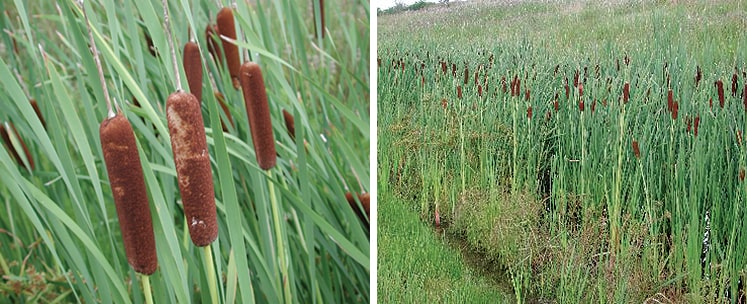Cattails

Description
Cattails have flat to slightly rounded leaves that twist slightly over their length and can grow to 5 or 10 feet in height. Flowers form a dense dark brown, cigar-shape at the end of spikes (called the catkin). Cattails can be partially submerged or in boggy areas with no permanently standing water. Cattails spread rapidly because their seeds blow in the wind and float on the water's surface and vegetatively they spread from underground rhizomes.
Mechanical Control
Cattails can be cut down or the rhizomes (roots) can be dug up. It will be difficult to control this way because it will regrow from seeds and remaining rhizomes.
Chemical Control
Systemic herbicides, such as Shoreline Defense, will work to kill the root of the plant. Shoreline Defense is a broad spectrum herbicide that can used to treat the Cattail once 18" of growth is above the waterline.
Chemical Application Best Practices
Anytime you use chemicals treat weeds and algae, please keep in mind the following:
- Treat your pond in sections. Treat only half the pond's surface at a time. During hot weather or when treating heavy growth, it is important to treat no more than 1/4 of your pond at a time and wait the full 14 days before re-applying. This helps lower the risk of fish loss during hot weather or when treating heavy growth.
- Once the weeds have browned & died, use a weed cutter & rake to remove as much dead material as possible. This prevents an accumulation of dead plant material and muck.
- Take a proactive approach to pond management. Use PondClear, MuckAway and Pond Dye to keep your pond looking great. For more information, see our article on the Airmax Ecosystem.
Ask an Expert
If you are unable to identify your pond weed(s) using our Weed ID Guide, follow this article to email us a photo.